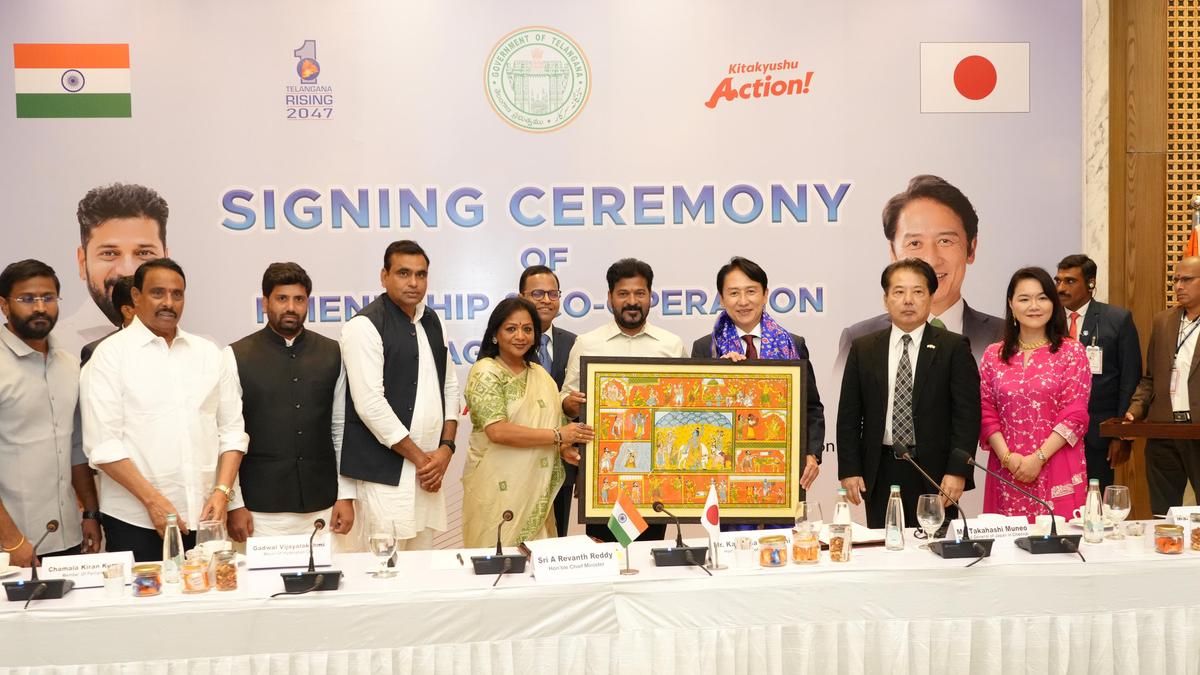ARTICLE AD BOX
Last Updated:May 31, 2025, 13:44 IST
Two women naval officers -- Lt Commander Dilna K and Lt Commander Roopa Alagirisamy -- returned to India after successful global circumnavigation spanning eight months.

Navika Sagar Parikrama (Photo: X/ Rajnath Singh)
Prime Minister Narendra Modi on Saturday hailed women’s empowerment in the country, especially in the armed forces, and cited the instance of two Indian Navy officers who successfully completed the circumnavigation of the globe under Navika Sagar Parikrama II.
Lt Commander Dilna K and Lt Commander Roopa Alagirisamy returned to Goa on Thursday after culminating their eight-month voyage across four continents, three oceans, and three Great Capes. The second edition of the expedition was flagged off from the Naval Ocean Sailing Node, Goa, on October 2, 2024.
The Prime Minister, while addressing a public meeting in Bhopal today, hailed their courage and said that they defeated all challenges and troubles in their way and emerged victorious.
“The brave Navy women personnel have successfully completed a voyage of oceans spanning 250 days. They visited all around the world. They did it on such a boat that does not run via motors but uses wind. We all know the storm in the oceans. The two daughters defeated all troubles like bad weather and storms of the oceans. This shows that no matter how big the challenge may be, Indian women can emerge victorious," he said.
Notably, Defence Minister Rajnath Singh presided over the flag-in ceremony on Thursday, formally marking the success of the global circumnavigation. He received the two naval officers and said that they have made the nation proud by waving the Tricolour across the world.
What Is Navika Sagar Parikrama II?
The two Indian Navy women officers covered a distance of around 50,000 kilometers (47,041 km) in nearly 250 days aboard Indian Naval Sailing Vessel (INSV) Tarini.
The expedition began on October 2 last year with an aim to cover over 23,400 nautical miles. The return was scheduled for May 2025.
This was the second edition of the Navika Sagar Parikrama expedition that took place in 2018 with an all-women crew onboard.
However, this time, only two officers featured on the vessel, who set out to cover the globe, significantly raising the challenges that may have arisen during the expedition.
The expedition’s route was planned with four major international stops, chosen for both practical and diplomatic reasons. The first important stop was on November 9, 2024, when INSV Tarini reached Fremantle, Australia, after a long and challenging 39-day journey covering over 4,900 nautical miles from Goa.
The two officers then continued their voyage to Lyttelton, New Zealand, for their second international stop, and later continued to Port Stanley in the Falkland Islands, a British territory.
With each stop, they had a chance to carry out maintenance, restock supplies, and take part in cultural exchanges, while also presenting India’s naval strength in front of the world.
Their fourth and last international stop was in Cape Town, South Africa. INSV Tarini was warmly welcomed in the country with the South African Naval Band holding a special welcome ceremony, showing the global respect the expedition had earned.
From Cape Town, the vessel started its sail back to Goa on April 15, 2025.

Ashesh Mallick is a Sub-Editor with over three years of experience in news writing, video production. He primarily covers national news, politics and global affairs. You can follow him on Twitter: @MallickAshes...Read More
Ashesh Mallick is a Sub-Editor with over three years of experience in news writing, video production. He primarily covers national news, politics and global affairs. You can follow him on Twitter: @MallickAshes...
Read More
- Location :
- First Published:
News india PM Modi Lauds Women Naval Officers Who Sailed 50,000 Km. What Is Navika Sagar Parikrama?



.png)
.png)
.png)
















 2 days ago
6
2 days ago
6









 English (US) ·
English (US) ·